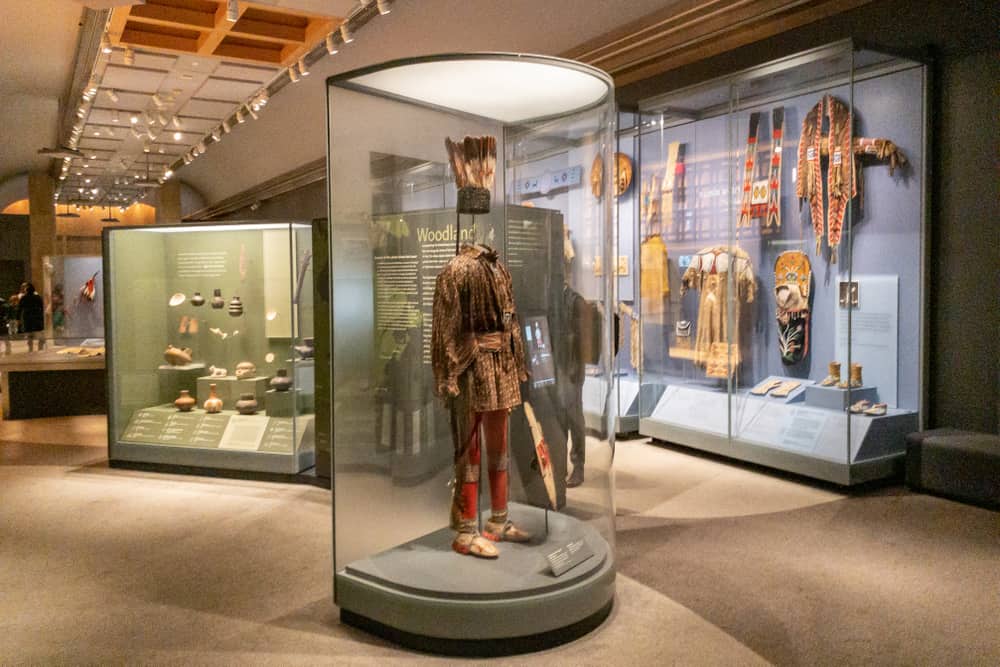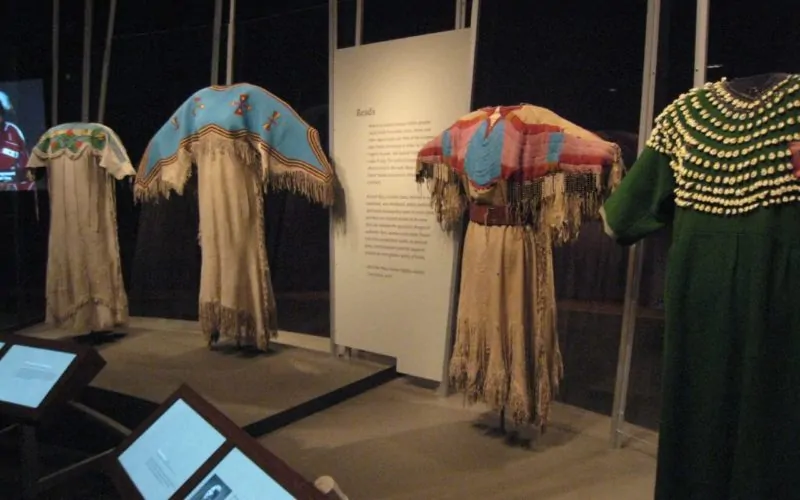
The Nexus of Authenticity and Engagement: Identifying Best Native American Museums for Cultural Immersion
I. Introduction: Redefining the Museum Experience for Indigenous Cultures
The pursuit of "cultural immersion" within a museum setting dedicated to Indigenous peoples of North North America (often referred to as Native Americans, First Nations, or Alaskan Natives) transcends mere observation of artifacts. It necessitates a profound engagement with history, contemporary life, spiritual beliefs, artistic expressions, and the enduring resilience of diverse Indigenous nations. Unlike traditional museums that historically presented Indigenous cultures through an external, often colonial, lens, the "best" Native American museums for cultural immersion actively center Indigenous voices, epistemologies, and community perspectives. This article delves into the critical elements that define such immersive institutions, highlighting exemplary museums that serve as vital platforms for education, understanding, and the perpetuation of Indigenous cultures. While pinpointing a single "best" is inherently subjective given the vast diversity of Indigenous experiences across the continent, several institutions stand out for their innovative approaches to fostering deep, respectful, and transformative cultural engagement.
II. Defining Cultural Immersion in the Museum Context
Cultural immersion, in this context, implies moving beyond a didactic, one-way transmission of information. It involves creating environments where visitors can:

- Encounter Indigenous Voices Directly: This means exhibits curated by, or in direct collaboration with, Indigenous communities, ensuring authenticity and challenging historical misrepresentations.
- Understand Indigenous Epistemologies: Presenting knowledge systems, worldviews, and spiritual beliefs on their own terms, rather than through Western frameworks.
- Engage with Contemporary Realities: Highlighting not only historical narratives but also the vibrant, dynamic present of Indigenous communities, their challenges, triumphs, and ongoing cultural practices.
- Experience Multisensory Engagement: Incorporating soundscapes, traditional foods, performances, language learning opportunities, and hands-on activities.
- Foster Empathy and Critical Reflection: Encouraging visitors to critically examine their own perspectives and the historical impact of colonialism, fostering a more nuanced understanding of Indigenous sovereignty and self-determination.
III. Core Criteria for Exemplary Immersive Native American Museums
Several interconnected criteria determine a museum’s effectiveness in delivering genuine cultural immersion:

- Indigenous Curation and Governance: This is paramount. Museums where Indigenous scholars, artists, elders, and community members hold significant curatorial and governance roles ensure narratives are authentic, respectful, and relevant. This shifts the paradigm from object-centric to people-centric storytelling.
- Holistic Narrative Presentation: An immersive museum avoids compartmentalizing Indigenous cultures into static historical periods or purely anthropological categories. Instead, it presents a holistic narrative that weaves together history, art, language, spirituality, political movements, and contemporary life, demonstrating continuity and adaptation.
- Ethical Collection and Repatriation Practices: A commitment to the Native American Graves Protection and Repatriation Act (NAGPRA) and broader ethical collection policies is fundamental. A museum’s willingness to return ancestral remains and cultural objects signifies respect for Indigenous sovereignty and contributes to cultural healing.
- Interactive and Experiential Learning: Beyond static displays, immersive museums offer workshops on traditional crafts, language classes, live performances of traditional music and dance, storytelling sessions, and culinary experiences featuring Indigenous foods. These activities transform passive viewing into active participation.
- Strong Educational Programming: Comprehensive programs for diverse audiences, from schoolchildren to academic researchers, are crucial. These programs often extend beyond the museum walls, engaging with local Indigenous communities and offering resources for deeper learning.
- Architectural and Environmental Integration: The physical space itself can contribute to immersion. Architecture that subtly references Indigenous design principles or museums situated on culturally significant lands can enhance the visitor’s connection to place and heritage.
- Emphasis on Language Revitalization: Given the critical importance of Indigenous languages to cultural identity, museums that actively support and integrate language learning initiatives (e.g., through bilingual exhibits, audio guides, or dedicated programs) significantly enhance the immersion experience.
- Addressing Contemporary Issues and Advocacy: The best museums don’t shy away from presenting the ongoing challenges faced by Indigenous communities, such as environmental justice, land rights, sovereignty, and systemic inequalities. They become platforms for dialogue and advocacy.
IV. Exemplary Institutions for Deep Cultural Immersion
While many museums across the United States and Canada contribute significantly to the understanding of Indigenous cultures, a few institutions consistently exemplify the principles of deep cultural immersion:
A. National Museum of the American Indian (NMAI), Smithsonian Institution (Washington D.C. & New York City)
The NMAI stands as a beacon for Indigenous representation on a national scale. Its foundational principle – that exhibits are developed in collaboration with, or entirely by, Indigenous communities – fundamentally redefines museology.
-
Strengths for Immersion:
- Indigenous Voice as Central: Each exhibit is a testament to Indigenous self-representation, offering diverse perspectives from hundreds of nations. This contrasts sharply with older anthropological museums.
- Pan-Tribal Scope: While its breadth means less depth for individual nations, it effectively conveys the immense diversity of Indigenous cultures across the Western Hemisphere.
- Architectural Significance: The museum’s curvilinear design in Washington D.C., inspired by natural forms and traditional Indigenous architecture, immediately sets a tone of reverence and connection to the land.
- Multisensory Experiences: The Mitsitam Cafe, featuring Indigenous foods from across the Americas, offers a unique culinary immersion. Live performances, storytelling, and hands-on cultural demonstrations are regular occurrences.
- Contemporary Relevance: Exhibits consistently bridge historical narratives with contemporary issues, art, and activism, demonstrating the continuity and dynamism of Indigenous cultures.
-
Areas of Consideration: Its vast scope can sometimes lead to a more generalized understanding rather than the hyper-specific, localized immersion offered by tribal museums. However, its mission is to represent the collective voice.
B. Heard Museum (Phoenix, Arizona)
Focusing predominantly on the cultures and art of the American Southwest, the Heard Museum offers a deeply immersive experience rooted in the vibrant traditions of the region.
-
Strengths for Immersion:
- Regional Depth: By concentrating on the Indigenous peoples of the Southwest (e.g., Navajo, Hopi, Zuni, Apache), the Heard provides an unparalleled depth of understanding of specific cultural traditions, art forms, and histories.
- Living Art and Artists: The museum is renowned for its annual Indian Fair & Market, which brings thousands of Indigenous artists from across the continent, allowing visitors to interact directly with creators, learn about their techniques, and purchase authentic art. This fosters a direct connection to living cultures.
- Traditional Performances and Demonstrations: The museum frequently hosts traditional dances, music performances, and craft demonstrations (e.g., weaving, pottery making), providing dynamic, experiential learning opportunities.
- Beautifully Curated Galleries: Exhibits are meticulously designed, often incorporating historical context with contemporary artistic expressions, allowing for a comprehensive view of cultural evolution and continuity.
- Outdoor Spaces: The museum’s sculpture gardens and traditional dwellings provide an outdoor, experiential component that enhances understanding of Indigenous relationships with the land.
-
Areas of Consideration: Its regional focus, while a strength for depth, means it does not offer a pan-Indigenous overview.
C. Eiteljorg Museum of American Indians and Western Art (Indianapolis, Indiana)
The Eiteljorg Museum distinguishes itself by integrating Native American art and history within the broader context of the American West, while maintaining a strong emphasis on Indigenous voices and contemporary issues.
-
Strengths for Immersion:
- Balance of Art and History: The museum excels at presenting both historical artifacts and contemporary Indigenous art, demonstrating the ongoing vitality and innovation within Native cultures.
- Strong Educational Outreach: The Eiteljorg has robust educational programs, including culturally sensitive storytelling, hands-on activities, and school partnerships that bring Indigenous perspectives to wider audiences.
- Focus on Cultural Continuity: Exhibits often highlight how traditional practices and beliefs inform contemporary life, art, and activism, providing a sense of cultural flow rather than static historical presentation.
- Interactive Galleries: The museum incorporates interactive elements that encourage visitor participation and deeper engagement with complex topics.
-
Areas of Consideration: Its inclusion of "Western Art" can sometimes dilute the sole focus on Native American perspectives, though the museum is diligent in ensuring Indigenous voices are prominent within its Native American galleries.
D. Mashantucket Pequot Museum & Research Center (Mashantucket, Connecticut)
For a deeply localized and nation-specific immersion, the Mashantucket Pequot Museum is unparalleled. It is owned and operated by the Mashantucket Pequot Tribal Nation.
-
Strengths for Immersion:
- Tribal Ownership and Perspective: This museum is a direct expression of the Pequot people’s history, culture, and sovereignty. Every aspect is presented from an internal, Indigenous perspective.
- Hyper-Realistic Dioramas and Reconstructions: Its lifelike dioramas of a 16th-century Pequot village and a 17th-century caribou hunt are incredibly immersive, transporting visitors to specific historical moments with stunning detail and soundscapes.
- Emphasis on Language Revitalization: The museum actively supports the revitalization of the Pequot language, incorporating it into exhibits and offering learning resources.
- Comprehensive Historical Narrative: It covers the entire history of the Pequot people, from pre-contact to the present, including the devastating Pequot War and their incredible journey of survival and resurgence.
- Research Center: Its accompanying research center serves as a vital resource for scholars and the community, reinforcing its commitment to knowledge preservation and dissemination.
-
Areas of Consideration: Its strength is its deep, localized immersion. While providing a powerful example of Indigenous resilience, it doesn’t offer a pan-tribal view.
V. The Evolving Role of Native American Museums: Beyond Display to Empowerment
The "best" Native American museums are not just repositories of the past; they are dynamic cultural centers, vital to the present and future of Indigenous communities. They serve as:
- Platforms for Cultural Revitalization: Supporting language programs, traditional arts, and ceremonies.
- Spaces for Healing and Reconciliation: Addressing historical trauma and promoting understanding between Indigenous and non-Indigenous peoples.
- Advocates for Indigenous Rights: Raising awareness about contemporary issues and supporting self-determination.
- Educational Hubs: Challenging stereotypes and fostering accurate, nuanced understanding.
VI. Conclusion: A Journey of Respectful Engagement
Identifying the "best" Native American museum for cultural immersion is less about a single institution and more about the collective impact of institutions that prioritize Indigenous voices, ethical practices, and profound engagement. The NMAI offers a broad, pan-Indigenous perspective rooted in self-representation. The Heard Museum provides deep regional immersion through living art and cultural practices. The Eiteljorg bridges history and contemporary art with strong educational outreach. And the Mashantucket Pequot Museum offers an unparalleled, nation-specific deep dive into tribal history and revitalization.
Ultimately, true cultural immersion is a journey that requires an open mind, a willingness to learn from diverse perspectives, and a commitment to respectful engagement. These exemplary museums provide not just glimpses into Indigenous cultures but portals to understanding, fostering empathy, challenging preconceptions, and celebrating the enduring spirit and diversity of Native American nations. They are essential educational resources for anyone seeking a deeper, more authentic connection to the rich Indigenous heritage of the Americas.


